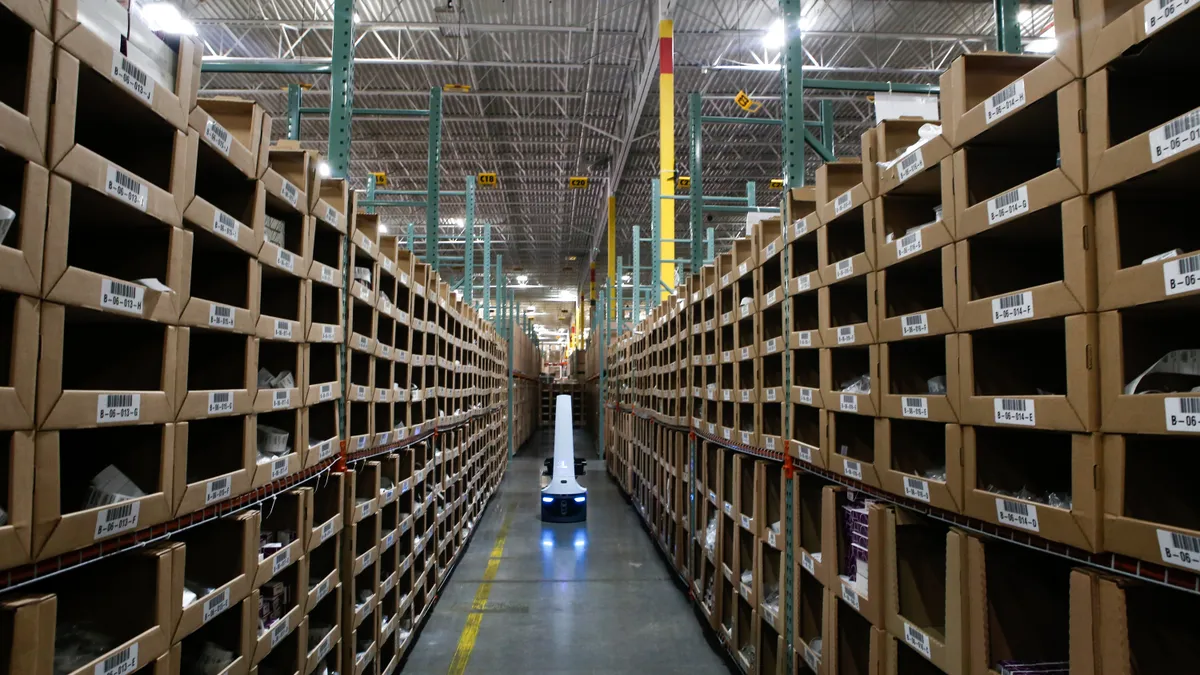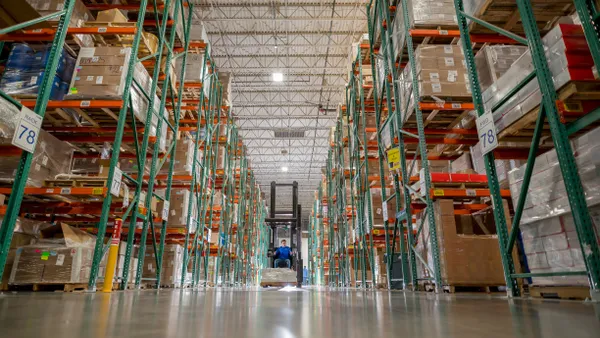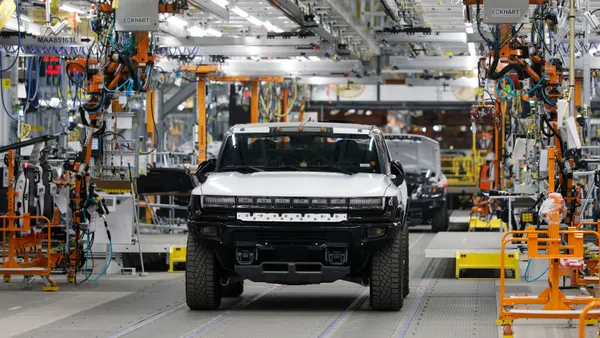Dive Brief:
- Warehouse robotics and artificial intelligence (AI) may be in the spotlight as supply chain cost-savers, but a recent survey by eft and Teknowlogi suggests the technologies are still in an experimental phase.
- Roughly 46% of the 104 respondents said they were not using AI in their supply chains, while another 49% said the same of warehouse robotic operations.
- Adoption rates for robotics appear to be greater among large-scale warehousing providers. One of the top challenges retailers and manufacturers still face, however, is justifying new technologies' return on investment (ROI).
Dive Insight:
Prohibitive costs have long hampered new technology's adoption, so these days, supply chain managers who see the need to innovate seem to be changing how they calculate cost — or rather, how they justify it.
A golden nugget in The 2018 Supply Chain Report is a breakdown of four different ways professionals measure ROI today. "Calculating ROI has traditionally been a relatively straightforward process," the report states. "The more supply chain gets involved in technology, this isn't as cut and dry."
As the chart below shows, the traditional model of "ROI = cost + recovery of cost" still reigns supreme, with 46% of respondents identifying that as the top approach. Others, however, are looking at value-added approaches, such as measuring ROI in terms production efficiencies, competitive advantage or how it enables future growth.
The strategy is hardly new. Companies at the earliest stage of innovation must often justify investments in terms of expected gains, since new technologies rarely have enough case studies to prove the cost-savings they propose.
Walmart, for example, said in 2004 it would require RFID-sensors from all of its suppliers, but then backtracked once it realized the cost would be far higher than the benefits. (The story is different ten years later.)
Investments in two-day shipping are but one example where intangible benefits seem to outweigh costs. Cybersecurity, some experts argue, is another.
Both examples, however, fulfill a separate need — meeting customers' expectations of service, in terms of speed and security. In a similar vein, it should not be surprising third-party logistics providers were found to be early adopters. Employing technology provides both a competitive advantage and a sales pitch.
But for an independent warehouse manager, even if the decision is made to begin adopting a new technology, fear of change, trouble finding suitable-cost suppliers and timing may all play a role in delaying implementations.













